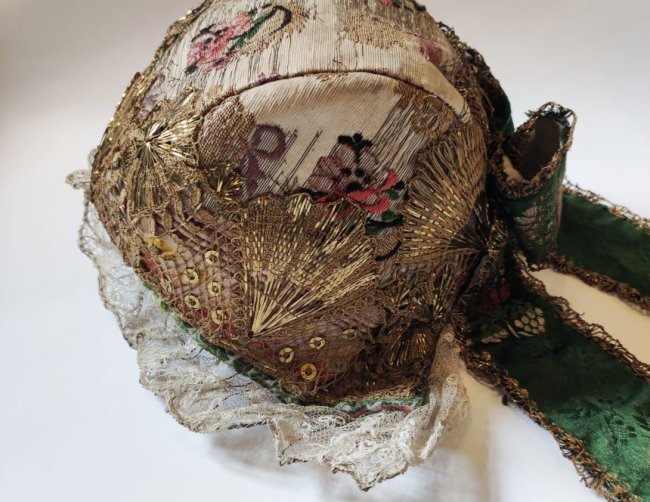Object
A bourgeois coif
Information
Copyright classification
https://pl.wikipedia.org/wiki/Domena_publiczna
Description
A beautiful, decorative bourgeois bonnet was donated to the Museum in 1945. It was made in the first half of the 19th century. 19th century using 18th-century materials: silk brocade on top of a bonnet with a flower motif and gold bobbin lace with a palmette and flower pattern. The bonnet was a headgear for married women.
On the wedding day, at midnight, during a ceremony called oczepiny, the bride received a bonnet from an older woman, usually the godmother, and from then on she no longer went bareheaded. The bonnet has been worn since the Middle Ages, and its appearance and form have changed over the centuries. Depending on whether it was worn for home or formal wear, it was made of different materials and had more modest or richer decorations. At the beginning of the 20th century, bonnets began to fall out of use, replaced by increasingly fashionable hats. At that time, it was still worn mainly by older matrons and traditionalists.
Edyta Ross-Pazdyk




